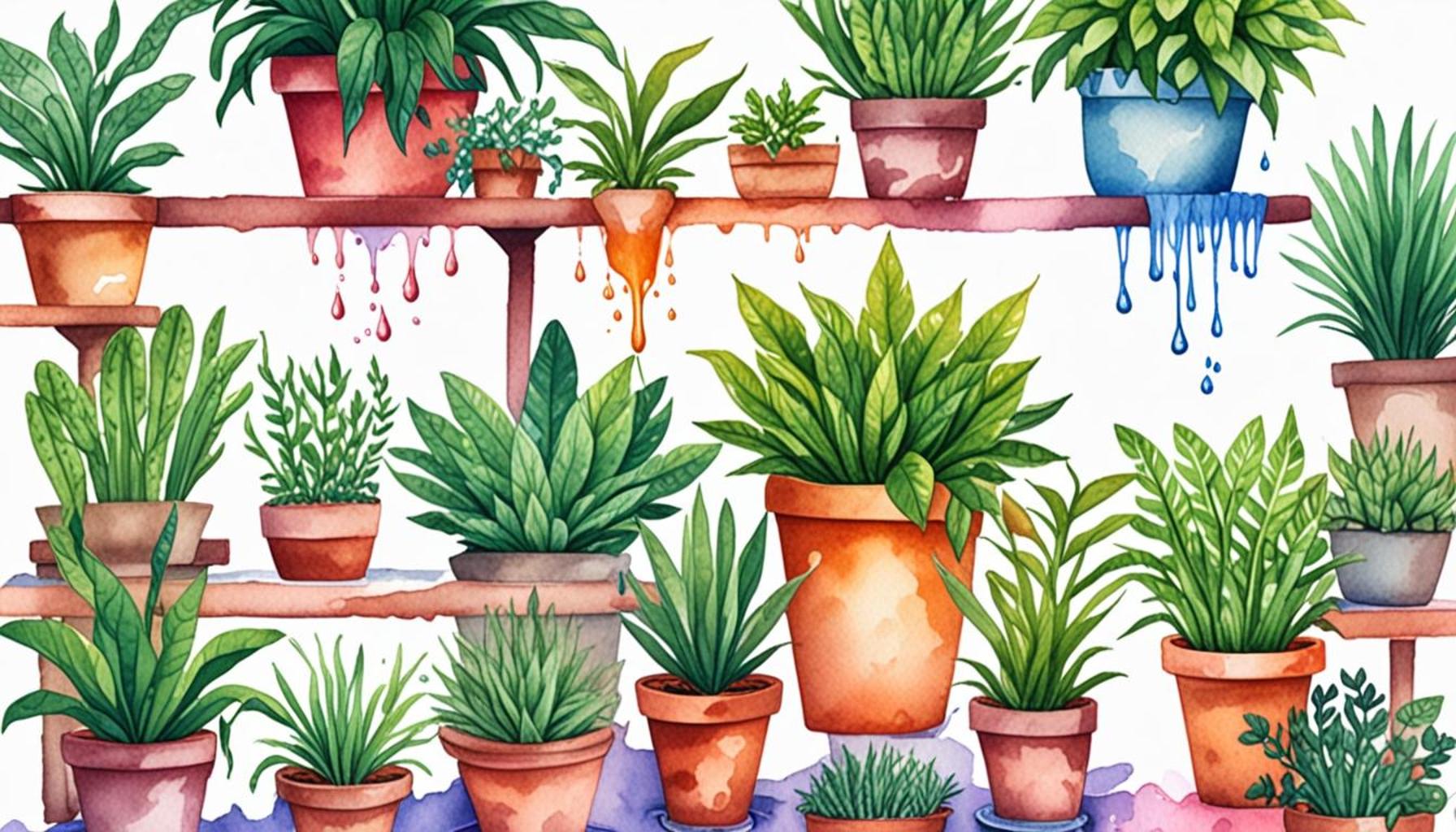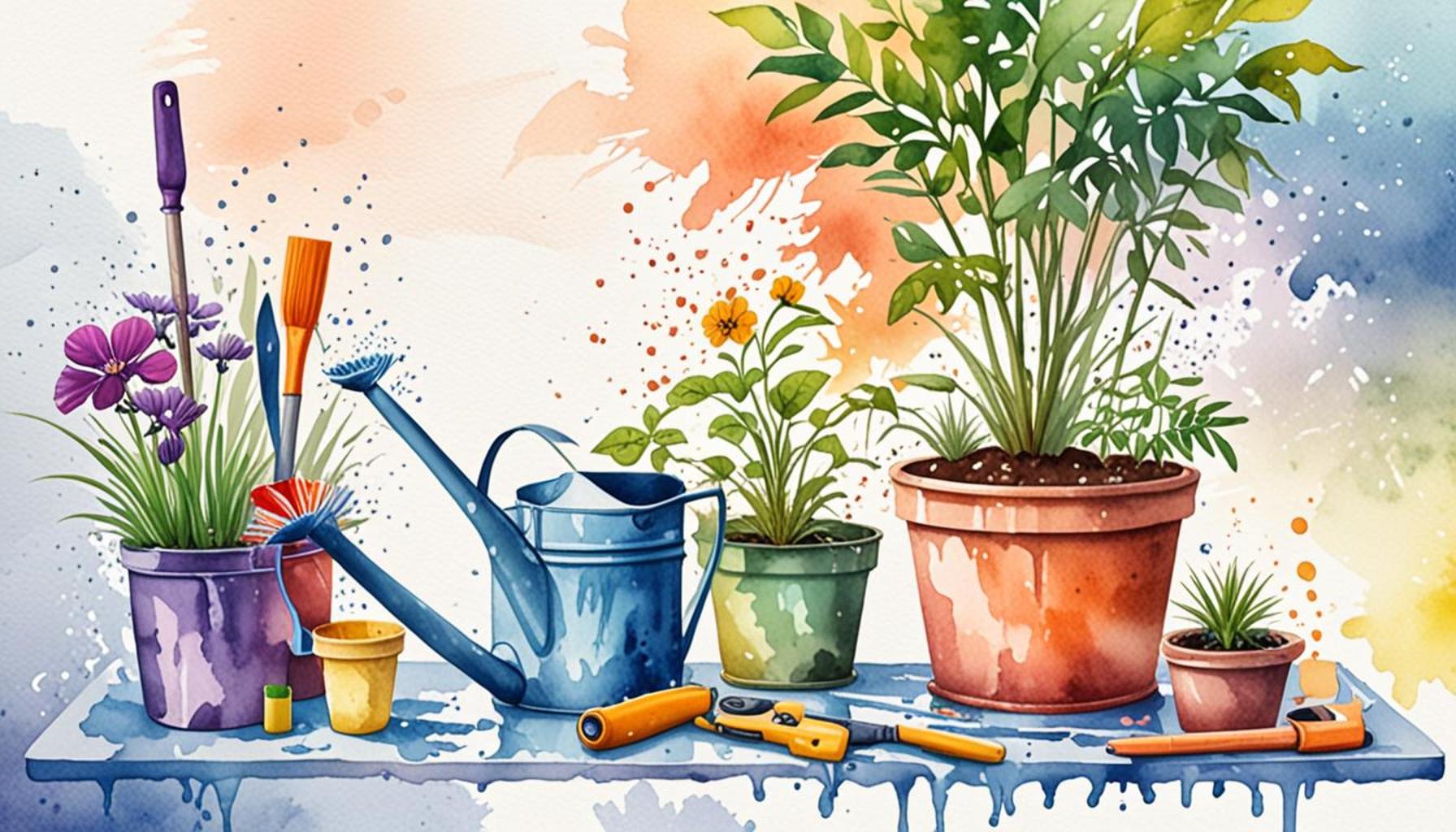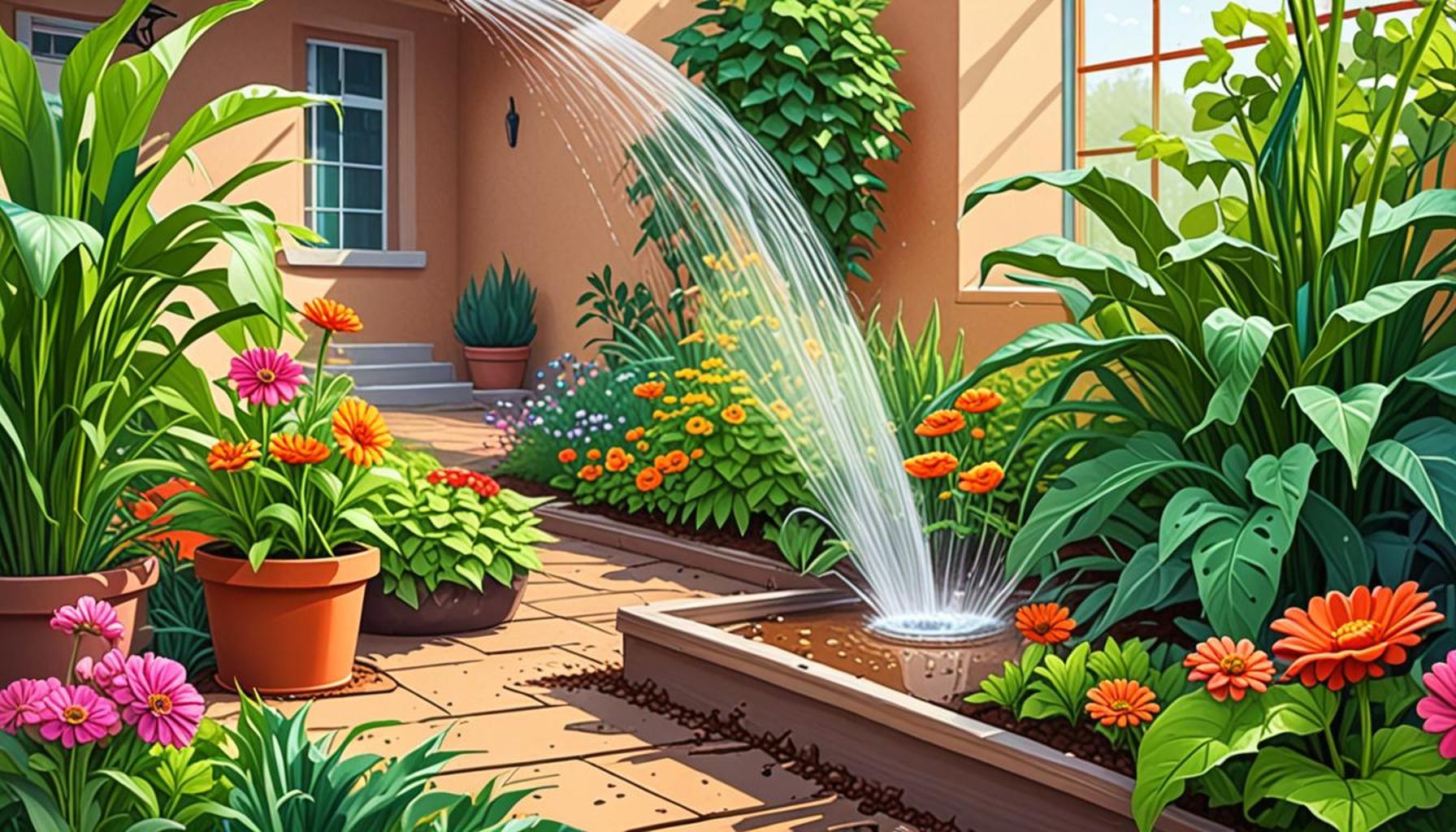How to Identify the Water Requirements of Different Types of Plants

Understanding Plant Water Needs
Water is undeniably the lifeblood of plants, playing a pivotal role in processes like photosynthesis, nutrient absorption, and overall growth. However, the specific water requirements of plants can vary greatly across species, making it imperative for gardeners and landscapers to tailor their watering strategies accordingly. From flourishing houseplants to bountiful vegetable gardens and expansive outdoor landscapes, effective watering practices can result in vibrant and healthy greenery.
Why Water Requirements Matter
It’s vital to recognize that improper watering can lead to a host of plant health issues, including wilting, root rot, and nutritional deficiencies. When assessing water needs, consider these influencing factors:
- Plant Type: Different plants have varying water requirements. For instance, succulents and cacti, which are adapted to arid environments, require much less water compared to ferns that thrive in humid conditions.
- Climate: The climate plays a dramatic role in how often you should water your plants. In areas like California or the Southwestern U.S., where heat and low humidity are prevalent, gardeners must frequently monitor moisture levels to avoid dehydration.
- Soil Type: The type of soil significantly influences water retention. Sandy soils drain quickly, often needing more frequent watering, while clay soils retain moisture, allowing for longer intervals between watering.
By understanding these factors, you can make informed choices about how much water each plant in your garden requires. This not only conserves precious water resources, particularly relevant in drought-prone areas but also nourishes a robust growing environment.
Getting Started
Determining the specific watering needs of your plants doesn’t have to be a daunting task. Here are some tools and resources to get started:
- Plant Labels: When buying plants, pay attention to the labels, as they often provide vital care information, including specific watering needs.
- Gardening Books: These can serve as excellent references for understanding the needs of various plant species. Titles such as “The New Sunset Western Garden Book” are invaluable for gardeners in the U.S.
- Online Resources: Websites like the USDA Plant Database or gardening forums provide a wealth of information from fellow plant enthusiasts and experts.
Taking the time to delve into the intriguing world of plant water needs can significantly enhance your gardening experience. With the right knowledge and commitment, you can cultivate a thriving garden that not only survives but truly flourishes. Engaging with your plants’ specific needs will open doors to a vibrant ecosystem in your home or yard, transforming your gardening efforts into a rewarding endeavor.

DIVE DEEPER: Click here for beginner-friendly succulents
Assessing Plant Specific Needs
Identifying the water requirements of your plants is a fundamental aspect of successful gardening. This task hinges on understanding the intricate relationship between plant species and their environment. To begin with, it is essential to categorize plants based on their water needs, as this classification can drastically affect how you manage moisture levels in your garden.
Grouping Plants by Water Needs
Water requirements can be broadly categorized into three groups: low, moderate, and high. Numerous plants fall into each category, showcasing the diversity among them:
- Low Water Needs: These plants are typically drought-tolerant and adapted to arid environments. Examples include succulents like Aloe vera and cacti such as Opuntia. They have specialized features, such as waxy leaves and deep root systems, that help them store and minimize water loss.
- Moderate Water Needs: A majority of common garden plants fit into this group. Many ornamental flowers and some vegetables, like tomatoes and peppers, benefit from regular watering without the risk of over-saturation. It’s crucial to maintain consistent moisture levels during growth periods, especially in warmer climates.
- High Water Needs: Certain plants require constant moisture, thriving in wetland areas or near bodies of water. Examples include Astilbe and Canna indica. These plants often develop shallow roots, relying on surface moisture to stay hydrated, making them unsuitable for dry, arid regions.
By segmenting your plants into these categories, you can better tailor your watering practices to meet their specific needs. It’s essential to note, however, that these classifications can vary somewhat based on local climate conditions. For instance, a plant categorized under high water needs in a temperate region might have different irrigation requirements if grown in a climate with prolonged heat and low humidity.
Observing Signs of Water Stress
Another critical skill in recognizing plant water needs is observing the visual cues they provide. Healthy plants will typically exhibit vibrant foliage, robust growth, and a resilient appearance. Conversely, signs of water stress may include:
- Wilting: Leaves may droop or become limp, indicating insufficient water.
- Yellowing Leaves: This can suggest overwatering, particularly if the roots are waterlogged.
- Crisp, Browning Edges: This indicators underwatering, leading to dry leaf margins.
Becoming adept at recognizing these signals can save you time and resources and improve the overall health of your garden. Remember that each plant species has unique tolerances and preferences—spending time observing their behavior will deepen your understanding of when and how to water.
When it comes to maintaining a healthy garden or indoor plant collection, understanding the water requirements of different plants is crucial. Each species has specific needs that vary based on several factors, including their natural habitat, growth stage, and environmental conditions. A first step in identifying these water needs is examining the plant’s leaves. For example, glossy leaves often indicate a plant that prefers a humid environment, while signifying a need for less frequent watering. Another aspect to consider is the soil type. Plants in sandy soils typically require more water due to rapid drainage, while those in clay soils can retain moisture for longer periods.
Observing the plant for signs of water stress is equally essential. Yellowing leaves may indicate overwatering, while drooping foliage could suggest a need for more moisture. Implementing a watering schedule based on the plant’s specific needs, rather than a one-size-fits-all approach, ensures each plant thrives. Additionally, utilizing moisture meters can provide valuable data, enabling gardeners to accurately assess when to water.
Finally, climate plays a pivotal role in determining how much water a plant will require. Factors such as temperature, humidity, and seasonal changes can all dramatically influence moisture needs. Having a comprehensive understanding of these elements allows for appropriate adjustments to be made to watering practices, enhancing plant health and growth. By tailoring care to meet each plant’s unique water requirements, gardeners not only promote vitality but also contribute to sustainable gardening practices.
DISCOVER MORE: Click here for essential gardening tips
Understanding Soil Moisture and Plant Types
While grouping plants based on their water needs and recognizing signs of stress are essential, understanding soil moisture levels is equally critical for identifying the watering requirements of different plants. Soil composition, structure, and drainage capabilities play a pivotal role in determining how quickly moisture is retained or lost. Familiarizing yourself with these elements creates an informed approach to irrigation and fosters healthier plant growth.
Evaluating Soil Type
Soil can be categorized into several types: clay, sandy, silt, and loamy. Each variety has distinct moisture retention properties:
- Clay Soil: Clay retains moisture exceptionally well due to its tiny particles and compact structure. However, this can lead to poor drainage, which is detrimental to plants that require well-drained conditions. In such soils, it’s vital to monitor moisture closely to avoid overwatering.
- Sandy Soil: Sandy soil drains quickly and often dries out rapidly after watering, making it less suitable for plants with high water needs unless frequent irrigation is practiced. It is perfect for drought-resistant varieties, but these should still be watered consistently during hot months.
- Silt and Loamy Soils: These soil types strike a balance between moisture retention and drainage, making them ideal for a wide range of plants. Regular monitoring of these soil types can provide a reliable indicator of when to water. Mulching, in these cases, can help to retain moisture and reduce the frequency of watering.
Conducting a simple soil test can help assess moisture levels. You can easily perform a “finger test” by sticking your finger into the soil up to the second knuckle. If it feels dry, it’s time to water. If it’s damp, the current moisture level should suffice.
Seasonal Variations and Climate Considerations
Identifying the water needs of plants also requires paying close attention to
seasonal changes and regional climates. Different seasons bring variations in temperature and precipitation, directly impacting soil moisture and plant hydration needs:
- Spring: As temperatures begin to rise, plants enter their growing phase and may require more consistent watering, especially if rainfall is sparse. Pay special attention to newly planted or young plants which may need more frequent moisture.
- Summer: This is often the critical period for many plants. Higher evaporation rates prompt increased watering needs. Utilizing drip irrigation systems or soaker hoses can help deliver moisture directly to the root zone while minimizing waste.
- Fall: Many perennials wind down during this season but they may still require watering, especially if unseasonably warm temperatures persist. Watering towards the end of the season helps prepare plants for winter dormancy.
- Winter: During winter months, soil moisture levels fluctuate significantly. Even in cold climates, it is important to monitor for moisture as dry environments can lead to desiccation, especially for evergreen species.
Understanding these dynamic factors empowers gardeners to adapt their care practices accordingly, ensuring that each plant thrives regardless of the changes in their environment. Regular observation and adjustment of watering patterns will ultimately yield healthier, more resilient plants capable of flourishing in the outdoor ecosystems of the United States.
DISCOVER MORE: Click here to learn about plants that will invite pollinators to your garden!
Conclusion
Mastering the art of identifying the water requirements of various plant types is essential for any gardener who wishes to foster a thriving landscape. By understanding the interplay between soil types, moisture levels, and climatic conditions, you can create a tailored watering strategy that meets the specific needs of each plant. The insight gained from evaluating soil composition—whether that be clay, sandy, silt, or loamy—enables you to gauge moisture retention and adjust your watering habits effectively. Through simple techniques like the finger test and keen observation of seasonal changes, you can proactively prevent both dehydration and overwatering.
Consider also the importance of regional climate and seasonal fluctuations. As the weather shifts, so too should your approach to irrigation. From the vigorous growth of spring to the dormant months of winter, staying attuned to your plants’ watering needs is crucial for their survival and vitality. Keep in mind that environmental conditions can vary significantly across the United States, and local adjustments may be necessary to suit your specific microclimate.
By integrating these factors into your gardening routine, you do more than just sustain your plants; you enhance their resilience against environmental stressors. In essence, the journey to understanding and fulfilling the water requirements of plants is not only about nurturing life but also about cultivating a deeper connection with the natural world. Take the time to observe, experiment, and learn, and your plants will thank you with their bountiful growth and beauty.



